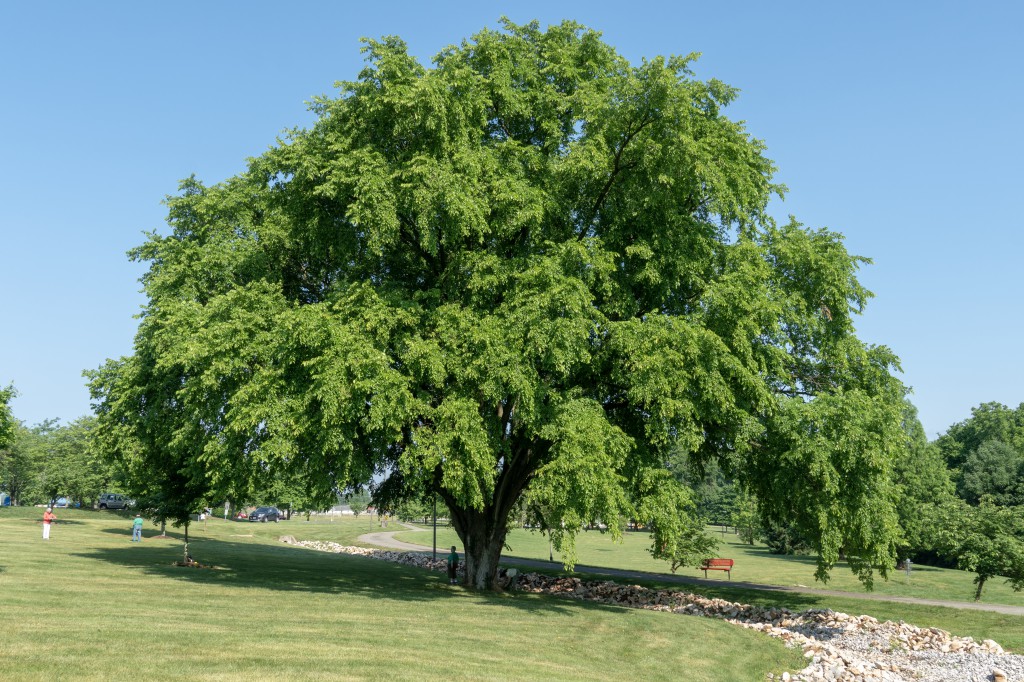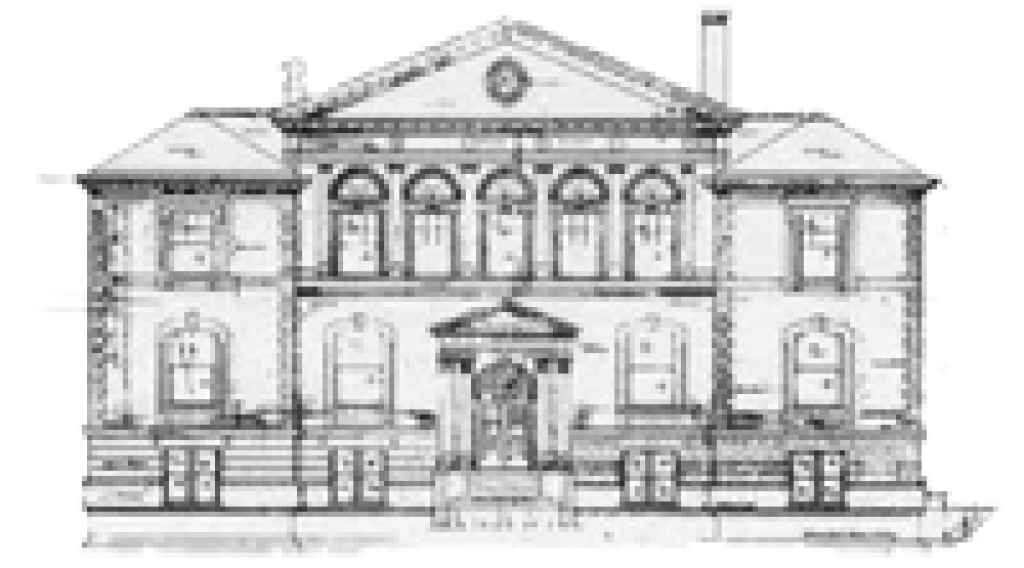Big Trees of Bowling Green

Just about everyone agrees that trees are great! They provide many benefits to our community and make life more enjoyable. The Bowling Green Tree Board and the Sierra Club of Bowling Green have partnered to gather information on some of our community’s largest trees and showcase their benefits.
We love trees and recognize that they are an essential part of our thriving community. Trees clean our air and water. Trees save electricity and sequester CO2. These are some of the benefits that we can easily calculate through our use of the iTree design website. This website is a free tool backed by decades of research that shows us how our trees are helping us. You can use it too. Just enter your address and plot your trees and buildings and you can see some of the benefits your trees provide.
While these benefits have been thoroughly researched and documented there are numerous other benefits that are not as obvious on an individual tree level, but at the community wide level our urban forests provide many social and health benefits such as:
- Promoting exercise and a healthy lifestyle
- Reducing stress
- Speed healing and reduce pain perception
- Lower crime rates
- Increase property values
- Promote economic stability by encouraging shoppers to spend more time in businesses
- Reducing stress on a city’s grey infrastructure
- Provide habitat for wildlife
Do a quick internet search for tree benefits and you are sure to find many other benefits of trees!
Stormwater
Urban stormwater runoff (or "non-point source pollution") washes chemicals (oil, gasoline, salts, etc.) and litter from surfaces such as roadways and parking lots into streams, wetlands, rivers, and oceans. The more impervious the surface (e.g., concrete, asphalt, rooftops), the more quickly pollutants are washed into our community waterways. Drinking water, aquatic life, and the health of our entire ecosystem can be adversely affected by this process.
Trees act as mini-reservoirs, controlling runoff at the source. Trees reduce runoff by:
- Intercepting and holding rain on leaves, branches, and bark
- Increasing infiltration and storage of rainwater through the tree's root system
- Reducing soil erosion by slowing rainfall before it strikes the soil
Energy Savings
Trees modify climate and conserve building energy use in three principal ways:
- Shading reduces the amount of heat absorbed and stored by buildings.
- Evapotranspiration of moisture by foliage reduces air temperatures.
- Trees slow down winds thereby reducing the amount of heat lost from a home.
Strategically placed trees can increase home energy efficiency. In summer, trees shading east and west walls generally keep buildings cooler. In winter, allowing the sun to strike the southern side of a building can warm interior spaces.
Air Quality
Air pollution is a serious health threat that causes asthma, coughing, headaches, respiratory and heart disease, and cancer. Over 150 million people live in areas where ozone levels violate federal air quality standards; more than 100 million people are impacted when dust and other particulate levels are considered "unhealthy." We now know that the urban forest can mitigate the health effects of pollution by:
- Absorbing pollutants like ozone (O3), nitrogen dioxide (NO2), and sulfur dioxide (SO2) through leaves
- Intercepting particulate matter less than 10 microns (PM10) like dust, ash, and smoke
- Releasing oxygen through photosynthesis
- Lowering air temperatures which reduces the production of ozone
Reducing energy use and subsequent pollutant emissions from power plants
CO2
How significant is this number? Most car owners of an "average" car (mid-sized sedan) drive 12,000 miles (19,312 kilometers) generating about 11,000 pounds (4,990 kilograms) of carbon dioxide (CO2) every year. A flight from New York to Los Angeles adds 1,400 pounds (635 kilograms) of CO2 per passenger. Trees can have an impact by reducing atmospheric carbon in two primary ways (see figure at left):
- They sequester ("lock up") CO2 in their roots, trunks, stems, and leaves while they grow, and in wood products after they are harvested.
- Trees near buildings can reduce heating and air conditioning demands, thereby reducing emissions associated with power production. However, if a tree produces no energy benefits there will be no resulting avoided CO2.
Combating climate change will take a worldwide, multifaceted approach, but by planting a tree in a strategic location, driving fewer miles/kilometers, or replacing business trips with conference calls, it's easy to see how we can each reduce our individual carbon "footprints".
Benefits of Trees Calculated by iTree
While some functional benefits of trees are well documented, others are difficult to quantify (e.g., human social and communal health). Trees' specific geography, climate, and interactions with humans and infrastructure are highly variable and make precise calculations that much more difficult. Given these complexities, the results presented here should be considered initial approximations to better understand the environmental and economic value associated with trees and their placement.
Big Trees of BG: Benefit Data (PDF)
We encourage you to take care of your trees, thank your neighbors for caring for theirs, get outside and enjoy our urban forest and plant a tree for our future!
Big Trees of BG (Fact Sheets)
Let us know if anything is wrong with this page. However, please don't include any personal or financial information.

